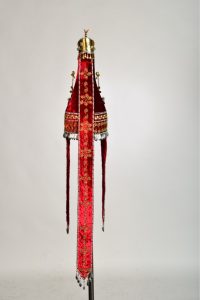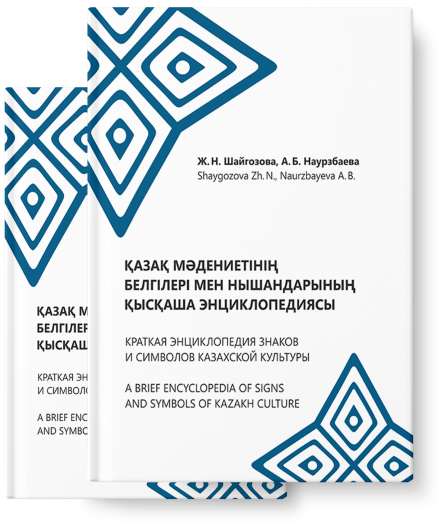
A short encyclopedia of
Signs and symbols of
Kazakh culture

This headgear rightly belongs to the most archaic variants, and the earliest archaeological evidence of its existence on the territory of Kazakhstan is the famous “Golden Man” of Issyk. It was an inseparable attribute of a girl’s ritual wedding dress, presented as a gift by her father and forming an important part of the bride’s dowry. The saukele thus emphasised the transitional status of the woman, the future mother.
According to the scientists’ reconstruction, the cone-shaped saukele with a sewn-on back (which was also richly decorated) embodies the World Mountain, a model of the universe that unites three worlds: the upper, the middle and the lower. The whole composition of the saukele decoration, which was unique and inimitable in each case, corresponded to the stable symbols and represented a certain semiosphere. The most common are the ornamental symbols “the sacred tree of life”, “ram’s horns” and others. Silver or gold-plated pendants and plates of all types and shapes were also sewn to the headgear: Silver, according to Kazakh beliefs, has protective powers, and such “participants” of the decorative composition as coral, pearl, carnelian and other stones protected the hostess from ruin, evil eye, eye shadow, etc.
The ancient Kazakh saukele, kept in various museums around the world, are considered to be unique works of art, made by skilled craftsmen in the course of a year. The headdress itself could be worn by a girl, starting with the wedding ritual, until the birth of her first-born child, and was passed down from generation to generation and kept as a family heirloom.

